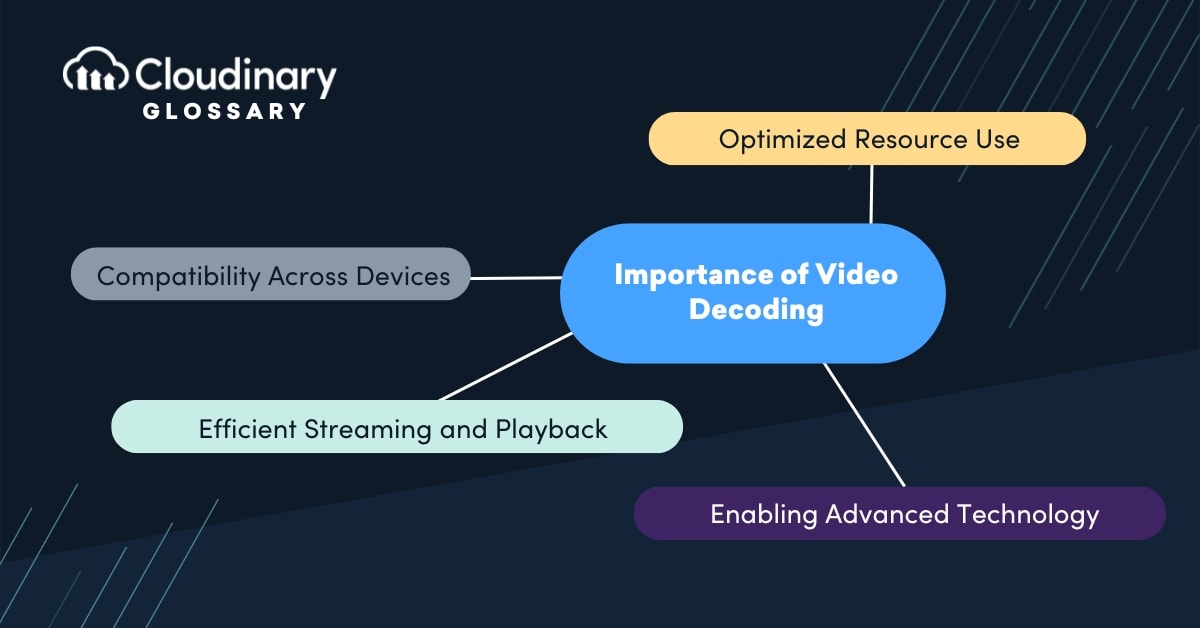
What Is Video Decoding?
In simple terms, video decoding is the process of converting compressed video data into a format that can be displayed on screens. Video content is often stored or transmitted in compressed formats like MP4, MKV, or AVI to save storage space and bandwidth. Decoding ensures that this compressed data is turned back into an understandable, playable video file that can be viewed without glitches.
For example, if you open a video file, your computer or smartphone uses decoding software or hardware to unpack and display the content. The video decoding process can occur through dedicated hardware (e.g., GPUs) or software codecs, depending on the device and application.
Encoding vs Decoding: What’s the Difference?
While decoding extracts video data for playback, encoding is the process of compressing raw video footage into a specific format for storage or transmission.
- Video Encoding involves taking the original, uncompressed video file (usually very large) and reducing its size by applying compression techniques. This makes it easier to store or share the video over the internet without excessive bandwidth consumption.
- Video Decoding, on the other hand, reverses this process. It takes the compressed file and reconstructs the original video so that it can be viewed with high quality on a screen.
Both encoding and decoding are reliant on codecs, which are algorithms or programs used to compress and decompress video files.
Different Types of Video Decoding
There are also two different methods of video decoding, powered by software or hardware.
- Software Decoding: A decoder is implemented as software, such as a media player on a laptop or mobile device.
- Hardware Decoding: This involves dedicated hardware, such as a GPU’s video decoder (e.g., NVIDIA’s NVDEC) or an ASIC, to handle the decoding process more efficiently.
How Video Decoding Works
Video decoding is the process that transforms compressed video data into a format ready for playback. It ensures that video streams can be viewed smoothly across different devices and platforms. The steps below outline how this process happens:
- Receiving the compressed file: The video arrives in a compressed format, often using codecs like H.264, H.265, or VP9, which reduce file size while preserving quality.
- Parsing the stream: The decoder reads the file and separates the video data from other elements, such as audio or subtitles, to prepare for reconstruction.
- Decompressing frames: The encoded video frames are expanded back into their original pixel information by reversing the compression algorithms applied during encoding.
- Reconstructing motion and images: Many frames are built using only partial data. The decoder fills in missing information by referencing other frames, ensuring smooth motion and complete images.
- Rendering the video: Once frames are reconstructed, the decoder sends them to the display system, which renders them as continuous moving pictures on the screen.
- Synchronizing playback: The decoded video is aligned with audio and other media elements, creating a seamless viewing experience.
This process happens in fractions of a second, enabling high-quality video playback on websites, apps, and devices. By managing video decoding effectively, platforms can ensure a fast, consistent, and engaging experience for users.
Why Is Video Decoding Important?
Video decoding plays a pivotal role in modern media consumption. Here’s why it matters:
Efficient Streaming and Playback
Most internet videos, including streaming services like Netflix or YouTube, are stored in compressed formats to save bandwidth. Without effective video decoding, you’d experience buffering, poor resolution, or even an inability to play videos. High-performance decoding ensures smooth playback, even in high-resolution formats like 4K or 8K.
Compatibility Across Devices
Decoding enables videos to be played on multiple devices—smartphones, tablets, PCs, and TVs—despite differences in hardware and software configurations. A universal decoding mechanism ensures broad compatibility across platforms.
Optimized Resource Use
Efficient video decoding reduces the strain on system resources. Hardware decoders, like GPUs, are vital for this, as they handle video decompression faster and with less energy consumption compared to software decoders. This results in longer battery life for portable devices.
Enabling Advanced Technology
Technological advancements like virtual reality (VR) and augmented reality (AR) rely on decoding high-resolution and immersive video formats. Without robust decoding methods, industries leveraging VR/AR content would struggle to deliver cutting-edge experiences at scale.

Final Words
Video decoding is indispensable in our media-driven world, serving as the bridge between compressed video files and seamless playback. While video encoding focuses on shrinking large video files for storage or transmission, video decoding ensures those files can be viewed in high quality on various devices.
The importance of it spans from efficient streaming to compatibility across platforms and also enables next-generation technologies, like VR. By understanding how decoding works, we can better appreciate the sophisticated technology powering our favorite videos.


